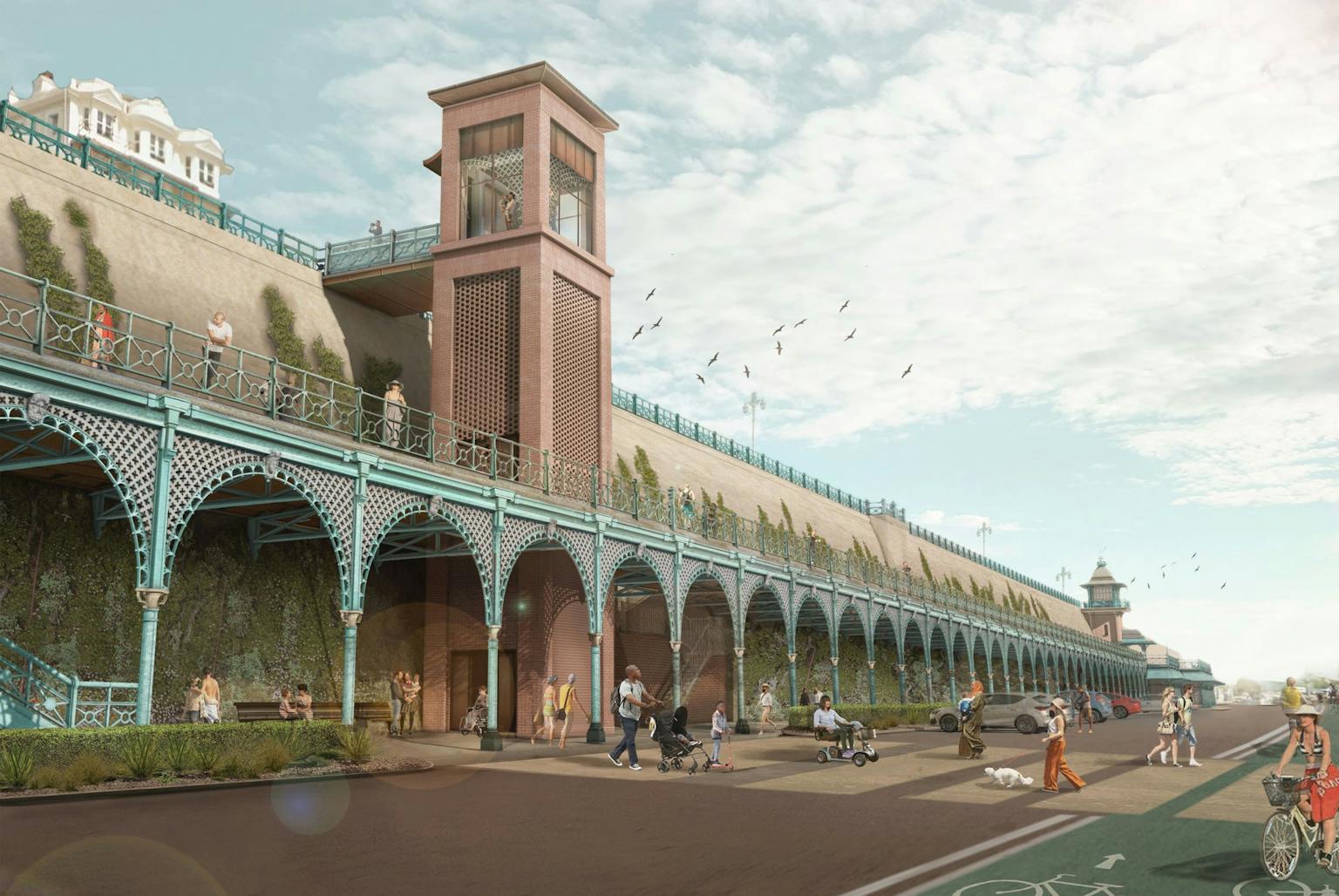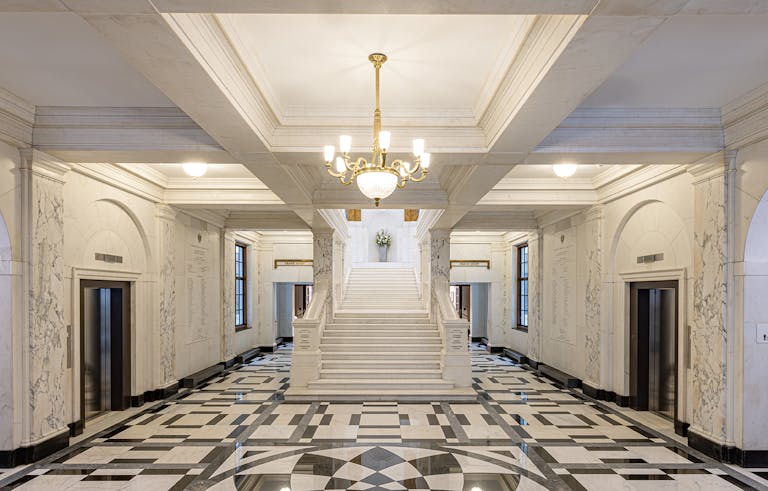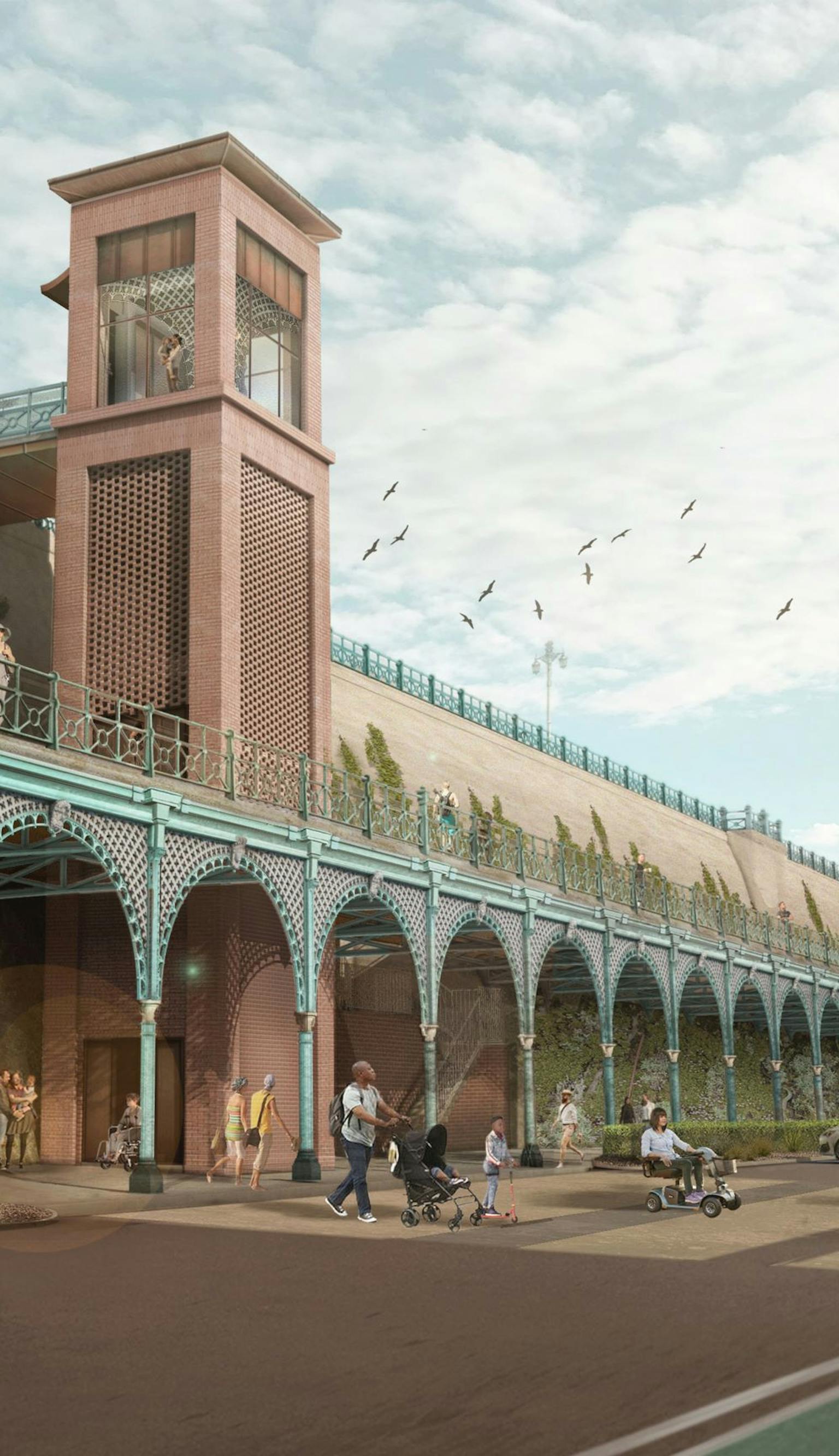
Madeira Terrace
Restoring and regenerating a Victorian seafront Promenade
- Location
- London & South East
- Client
- Brighton & Hove City Council
Purcell are working to restore and revitalise Brighton’s seafront promenade,opening up direct access to the waterfront along the eastern foreshore.
Madeira Terrace is a well-known and much-loved Brighton & Hove Landmark, built in 1888-1890 and later extended in the early 20th century, however, it has fallen into disrepair. At 865m in length, it is one of the longest cast-iron structures in the world and an admired piece of Victorian architecture, integral to the social history of the Eastern Seafront. Its Grade II* listing confirms its rich heritage value in the context of the wider coastal city. The main ambitions of the project are to improve accessibility and public movement and reduce the severance between the town and the seafront. The terrace and promenade are currently unusable and inaccessible having suffered from environmental damage and decay and are currently on Historic England’s Heritage at Risk Register.
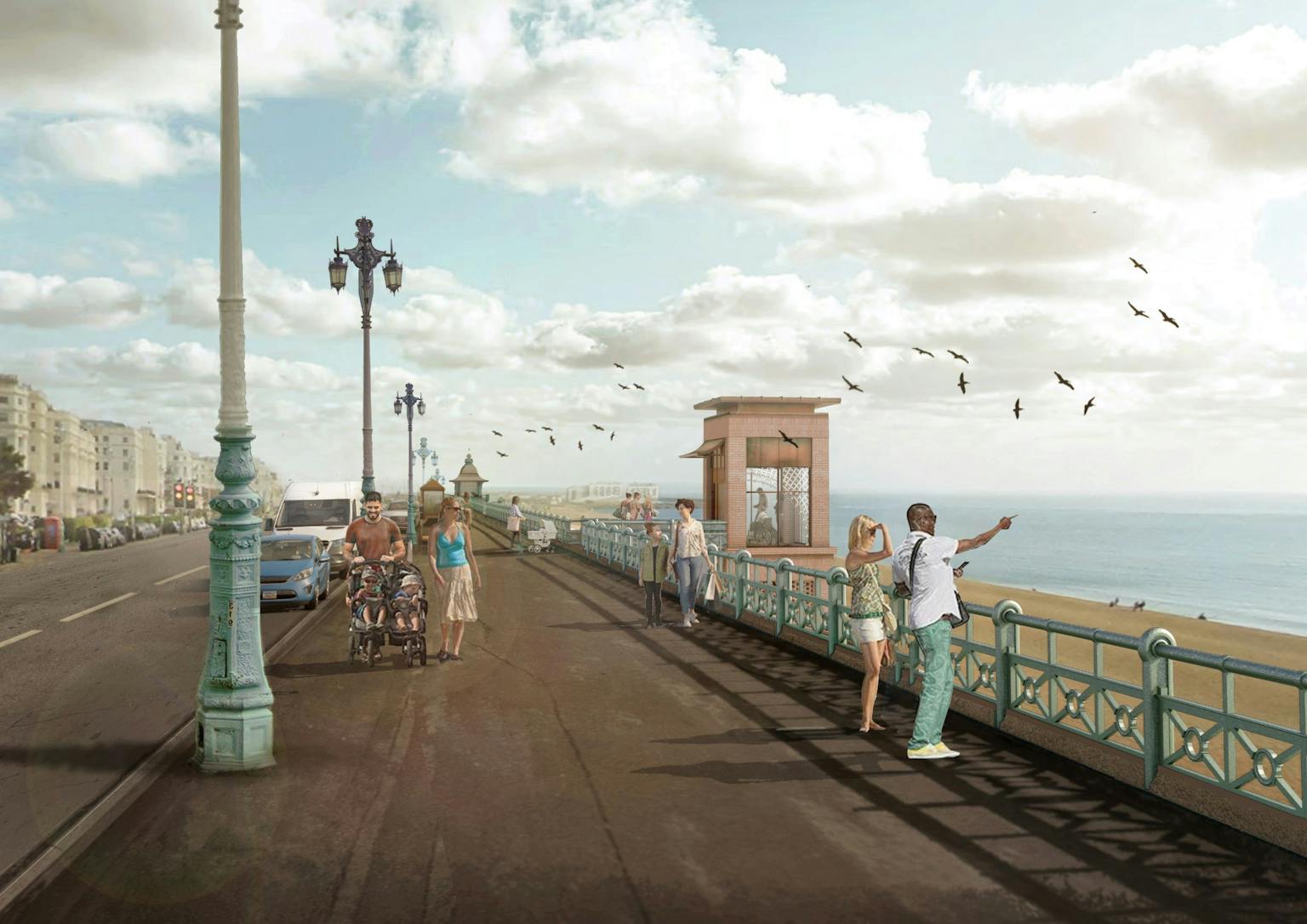
The terrace is a long horizontal form split into three levels, leading from Marine Parade, at the top of the cliff, down to the beach. Between Marine Parade and the beach, there is the terrace, which along its length, had various shelters, benches and planters. At its base is a covered walkway formed of 151 identical cast iron arches, which provide the structure of the terrace above. The three levels are currently connected by only one lift, with several staircases also dotted throughout.
Various options were considered by the council for the renewal of the structure including the creation of retail spaces in the arches or developing it into a hotel. However, through development of the feasibility study with Purcell, the client concluded that it was important to keep the terrace for public benefit and as a linear grandstand for the council’s popular events. Thus, the terrace will continue to be free to access, as it has been for the duration of its 130 year history. This sense of public benefit became very apparent during Covid and the vital necessity of having access to outdoor spaces and fresh air, which is so important for both our physical and mental health.
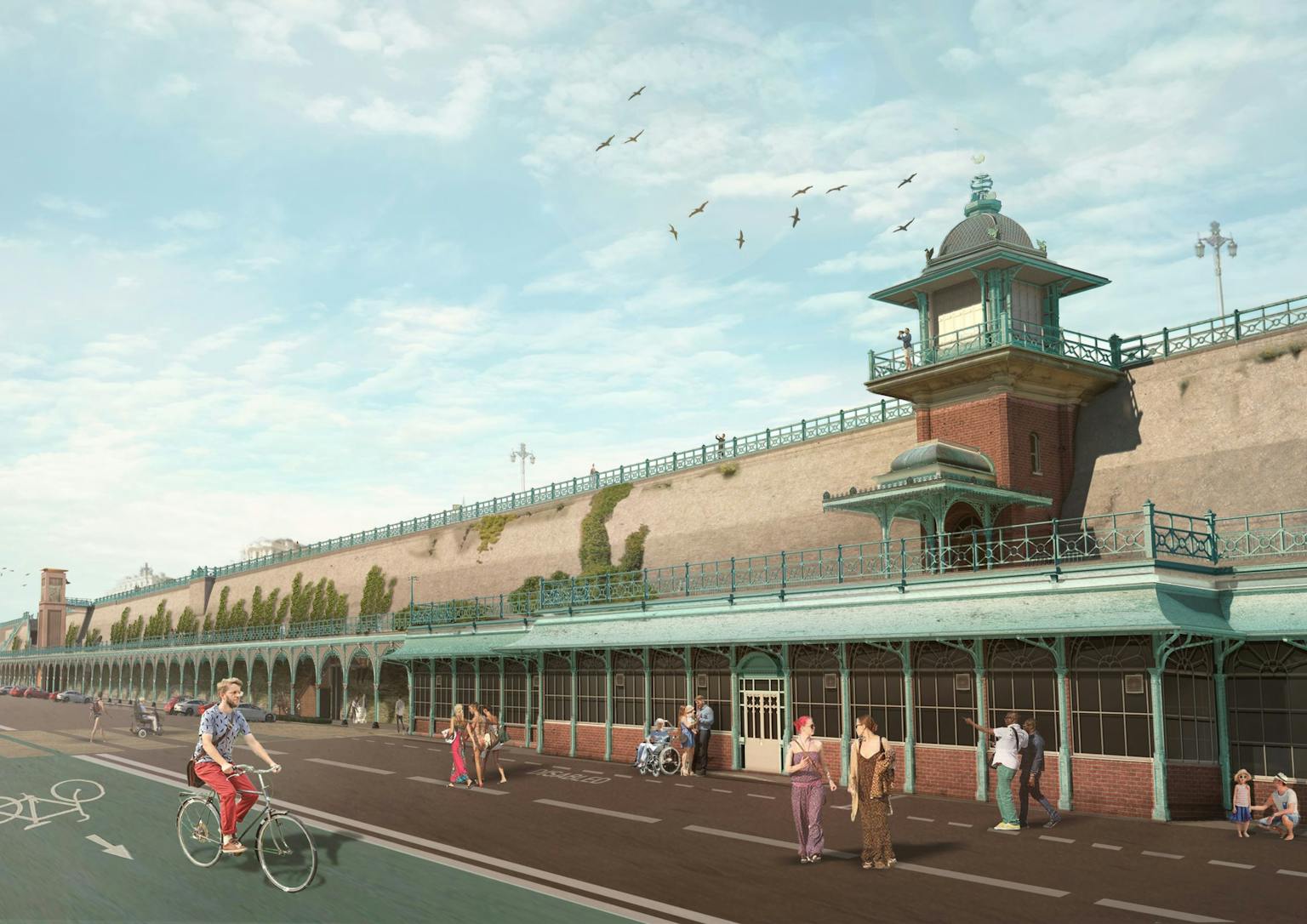
Brighton & Hove City Council have taken on the ambitious project of restoring the cast-iron structure in phases, with the first trial section located at the eastern end, also the closest to residential neighbourhoods, meaning local communities will benefit first. Once restoration and repair methods have been successfully carried out on this first section, they will set the benchmark to be rolled out across the entire structure.
In this first phase of works, there will be a focus on three areas of priority: repairing, restoring and replacing, where necessary, the cast iron structure as well as replacing and repairing the deck and cliff wall; improving vertical access through the introduction of a new lift tower; and improving public realm and amenities, including sustainable plantings, the protection and restoration of the historic green wall, new seating areas, and more
The proposals have received planning permission and Listed Building Consent and work will commence on site in 2023.
Studio: Canterbury
